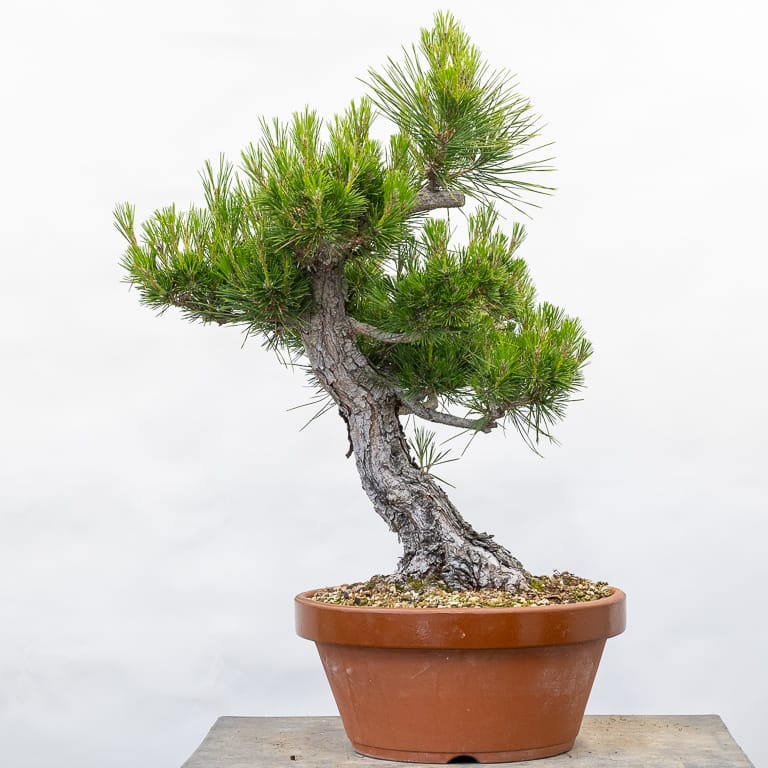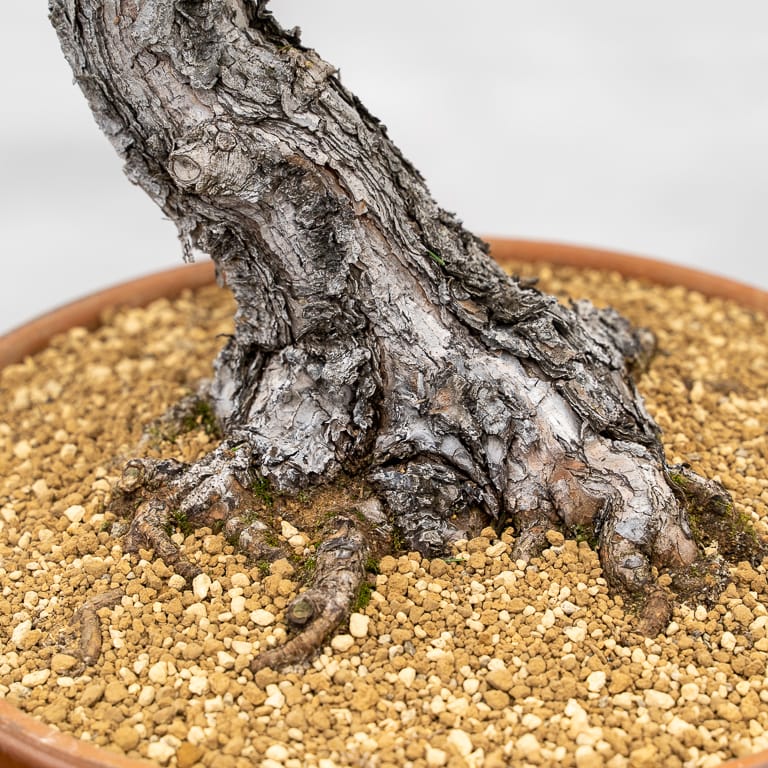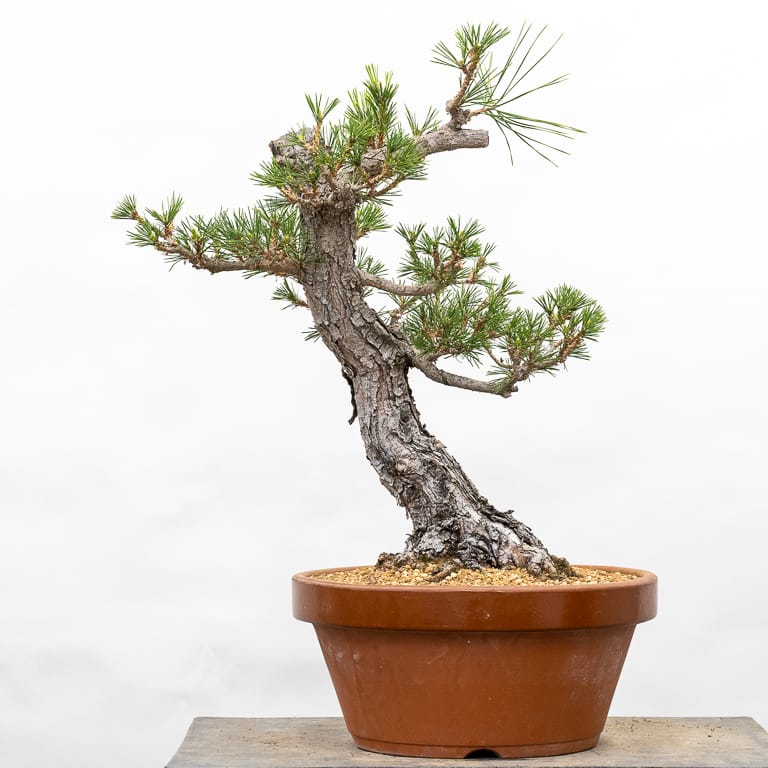The pine below, grown from seed by Eric Schrader, is in the early stages of branch development. The major sacrifice branch came off a couple of years ago, and the tree has been decandled at least one or two times before.

Japanese black pine – 13 years from seed

Lower trunk (tachiagari) and surface root (nebari) detail
This spring, the plan is to reduce some of the longer branches and decandle all new shoots. Because I didn’t pluck the old needles last fall, I’ll pull some needles too. Here’s what the tree looked like after this work.

After cutback, decandling, and pulling needles
At this stage, that’s the only work that needs doing. But as spring is an acceptable time to wire pines (the best time is in fall or winter), I thought I’d get a jump on things and wire at least the main branches. After getting started, however, I kept adding smaller and smaller wires until most of the primary and secondary branches were wired.

After wiring – 19″ tall
In general, it’s best to simply let pines grow this time of year, but I’ve found it can make fall styling easier when the main branches are wired as this lets the summer growth fill in at the appropriate angle. I plan to start fertilizing the tree again in about a month and will continue fertilizing through the end of the year.
Sei Boku Bonsai Kai Exhibit This Weekend!
On June first and second, Sei Boku Bonsai Kai will host their 36th annual exhibit at the San Mateo Garden Center. Show hours are 10:00 a.m. – 4:00 p.m. both days.
Admission is free and includes entry to the club member plant sale and vendors area. Saturday features demonstrations by Steve Iwaki and Jerry Carpenter from 1:00 p.m. – 3:00 p.m. Dr. Bonsai will be available to offer styling and care tips. I’ll be vending at the event with tools, supplies and a selection of satsuki azalea bonsai.
Check the Sei Boku Bonsai Kai website for more information.
✕
Subscribe to Indian Bonsai Art
New Posts Delivered Every Tuesday and Friday
